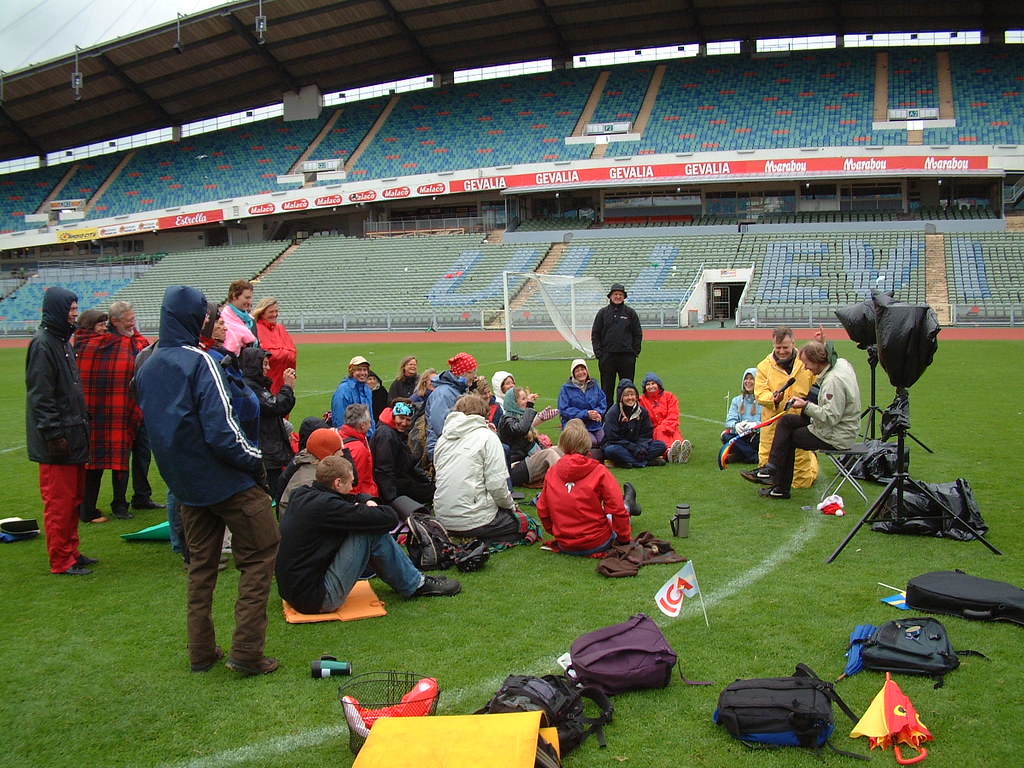Se http://www.poverty.com/internationalaid.html
http://www.freerice.com
2006 International Aid Donated (Official Development Assistance)
COUNTRY For each $100 earned in the country, how much is donated in aid
Aid as % of income
How close the country is to reaching the 0.7% goal
Sweden 103 cents 1.03 Already reached goal
Luxembourg 89 cents 0.89 Already reached goal
Norway 89 cents 0.89 Already reached goal
Netherlands 81 cents 0.81 Already reached goal
Denmark 80 cents 0.80 Already reached goal
Ireland 53 cents 0.53 Scheduled to reach in 2012
United Kingdom 52 cents 0.52 Scheduled to reach in 2013
Belgium 50 cents 0.50 Scheduled to reach in 2010
Austria 48 cents 0.48 Scheduled to reach in 2015
France 47 cents 0.47 Scheduled to reach in 2012
Switzerland 39 cents 0.39 No schedule yet
Finland 39 cents 0.39 Scheduled to reach in 2010
Germany 36 cents 0.36 Scheduled to reach in 2014
Spain 32 cents 0.32 Scheduled to reach in 2012
Canada 30 cents 0.30 No schedule yet
Australia 30 cents 0.30 No schedule yet
New Zealand 27 cents 0.27 No schedule yet
Japan 25 cents 0.25 No schedule yet
Portugal 21 cents 0.21 Scheduled to reach in 2015
Italy 20 cents 0.20 Scheduled to reach in 2015
United States 17 cents 0.17 No schedule yet
Greece 16 cents 0.16 Scheduled to reach in 2015
Source: OECD
Details
The deaths you see on this site have one thing in common: they result from extreme poverty. Poverty keeps hungry people from buying enough food to nourish themselves. Poverty keeps sick people from receiving basic medical treatment or taking simple preventative measures. The vast majority of these preventable deaths occur among the poorest people in the poorest countries.
In September 2000, the 189 countries of the United Nations unanimously agreed to “spare no effort to free our fellow men, women and children from the abject and dehumanizing conditions of extreme poverty,” specifically hunger and the “major diseases that afflict humanity.”
To accomplish this great objective would be expensive, and the price was later estimated at about $195 billion a year. It would be very difficult for this amount of money to be raised by private charities or individuals. It would require the combined efforts of governments throughout the world to do it.
Countries Agree to 0.7% in International Aid
In the March 2002 Monterrey Conference, 22 of the world’s wealthiest countries (listed above) agreed to make “concrete efforts” towards the goal of each giving 0.7 per cent of their national income as aid to the poorest countries. This conference was attended by British Prime Minister Tony Blair, U.S. President George Bush, French President Jacques Chirac, and many other world leaders.
In the September 2002 Johannesburg Summit, these same 22 counties re-affirmed their commitment to reach the 0.7% goal. This would provide enough money to raise the $195 billion per year.
Why the 0.7% Agreement?
The countries made this agreement because they realized that it was hard for each country on its own to give a consistent, minimum level of aid each year. Despite good intentions, a country would find that the aid it wanted to give was eaten away by competing political interests, concern about budget deficits, “problems at home,” “problems abroad,” and so on. So they agreed to a minimal, flat rate that each country could afford each year regardless of its current political or economic state.
The 0.7% figure may sound complicated, but it is actually quite simple. You take the total income earned by all the people in the country and then the government gives 0.7% (seven tenths of one percent) of that as aid. Or to look at it another way: for every $100 earned in the country, the country gives 70 cents in aid.
How are the countries doing?
As the chart above shows, five countries have already met the goal to give 0.7% of their income in international aid: Denmark, Luxembourg, the Netherlands, Norway, and Sweden.
In 2002 and 2003, five other countries set up a schedule to give 0.7%: Belgium, Ireland, Finland, France, and Spain.
In July 2004, the United Kingdom set up a schedule to give 0.7%.
In April 2005, Germany set up a schedule to give 0.7%.
In May 2005, Austria, Greece, Italy, and Portugal set up a schedule to give 0.7%.
It was not easy for many of the countries to set up a schedule to reach the 0.7% goal. In some cases, such as Britain and Germany, it took the combined effort of many thousands of citizens writing and petitioning their government to get it done.
The remaining six countries
Only six countries have not yet set up a schedule to give 0.7%. These are Australia, Canada, Japan, New Zealand, Switzerland, and the United States. To raise the $195 billion a year, these six will need to reach the goal.
These six countries are all democracies. All that is necessary for them to reach the 0.7% goal is for enough of their citizens to show their support.
Sources: UN Millennium Project, United Nations Development Program (UNDP), The End of Poverty (Jeffrey D. Sachs), Organization for Economic Co-operation and Development (OECD).
http://www.poverty.com/internationalaid.html
tisdag, november 13, 2007
Stolta Svenskar ger mest och kan ge mer. Nu.
Prenumerera på:
Kommentarer till inlägget (Atom)
















Inga kommentarer:
Skicka en kommentar